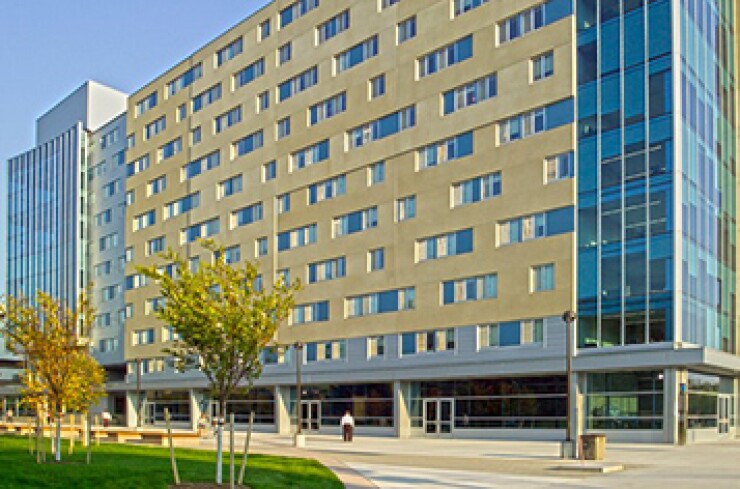
DALLAS – Michigan's Wayne State University has struck a $1.4 billion, 40-year public-private partnership that will allow it bypass the capital markets to upgrade its housing stock and retire debt.
The deal with Corvias Campus Living LLC provides the Detroit-based school, which has grappled with declining enrollment, a means to finance its housing master plan and retire existing debt while also providing $800 million of reinvestment capital over the life of the partnership.
Moody's Investors Service said on Wednesday that the partnership, which the university approved on Sept. 23, is credit positive for the university because it can revitalize its housing stock in the face of declining enrollment while reducing housing system related general revenue debt. The ability to attract Corvias diversifies the university's capital investment sources and options, Moody's said.
Corvias plans an initial investment of $300 million, which will be used to pay down $102 million of Wayne State's existing debt associated with housing as well as construct and renovate existing housing.
"That means that of all the outstanding indebtedness that Wayne University has, they will literally move $102 million of their balance sheet to free up that capacity for other borrowing needs going forward," Geoff Eisenacher, vice president of partnership development at Corvias, said in an interview.
Eisenacher said that a unique aspect of the partnership is a feature of the structure that calls for a reinvestment fund. It is funded from cash at the bottom of the waterfall. That money is accrued over the life of the partnership and is expected to be reinvested back into the university's housing so that the assets are continually upgraded and don't depreciate through its useful life.
"It's a fundamental aspect of the program that Wayne State is choosing to embrace," said Eisenacher. "Wayne State will determine how much they want to take as general revenue and they will determine how much they want to allocate in the reinvestment reserve fund. Corvias will sit down with the school to determine on how much they should go into long term reinvestment reserve account."
The university maintains ownership over all buildings and land, as well as control over residence life. Corvias will be responsible for all aspects of property management, including maintenance, janitorial and repair services. The university and Corvias will work together to set housing rates.
The university's housing master plan adds 840 beds by 2019. They would be located in the Anthony Wayne Drive Apartments building, and will open in two phases beginning in fall 2018.
The Anthony Wayne project will also be home to 18,000 square feet of retail space and a 9,000-square-foot Campus Health Center.
The remaining $1.1 billion identified over the 40 years of the agreement includes $800 million in new and renovated housing and projected cash flow available to the university.
"With the partnership, Wayne State University was able to put together an end to end solution that actually helped achieve their housing master plan whereas before they had no way to access the capital needed to achieve this masterplan," said Eisenacher.
Wayne State's housing system is a component of the general revenue pledge provided to university bondholders. Moody's noted in the report that the partnership "dilutes" approximately $18 million of the $504 million in student housing revenues from the university's general revenues pledge provided to bondholders.
However, it also enhances the university's strategic position because it heightens student demand and enrollment growth.
"This dilutive effect could be offset by growth in other student-related revenue streams such as tuition and fees and board revenues," said Moody's.
The university, which is primarily a commuter campus, views the creation of a vibrant residential community as a way to increase enrollment. A lack of housing has meant that for the past three years it's had to house students off-campus in a local hotel and in temporary quarters on campus.
In August, Moody's lowered its outlook to negative from stable on the university's $101 million of bonds refinanced in June and more than $400 million in total debt. The rating agency affirmed the public university's Aa3 rating.
Earlier this summer, S&P Global Ratings downgraded the university to A-plus from AA-minus.
The actions were driven in part by pressures from steady enrollment declines. Over six years Wayne State's enrollment fell more than 10%, from 30,510 in 2009 to 27,222 in 2015. The university has also suffered as state funding for capital was nearly eliminated in fiscal 2012 cuts, leaving universities to issue their own debt and resources to fund projects. Wayne State has over the last several years dipped into fund reserves to renovate and rehabilitate classrooms and class laboratories, hurting its level of net assets.





